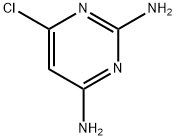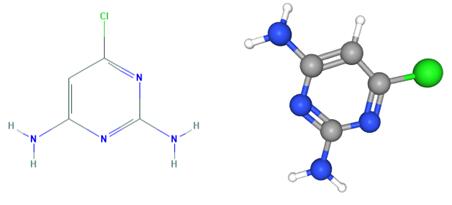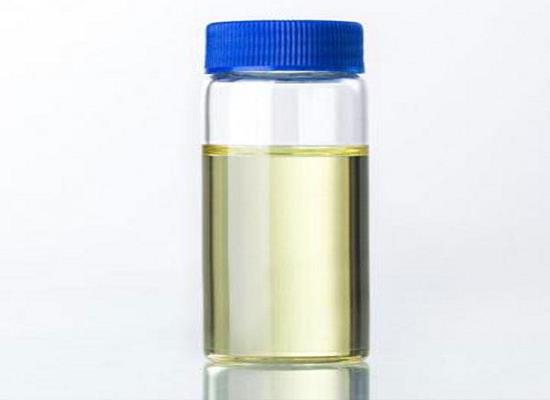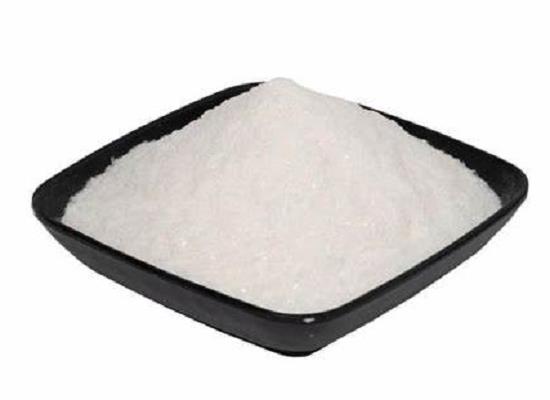4-Chloro-2,6-diaminopyrimidine: properties, applications and safety
General Description
4-Chloro-2,6-diaminopyrimidine is a white crystalline solid with a molecular formula of C4H5ClN4 and a molecular weight of 144.56 g/mol. It is soluble in water and slightly soluble in organic solvents. The compound acts as a weak base with a pKa value of 6.3 and is stable under acidic conditions. However, it may decompose in alkaline conditions. It is sensitive to light and heat and can undergo disproportionation reactions in the presence of moisture. The compound has potential applications in the degradation of s-triazine compounds, such as atrazine and simazine, which are harmful to the environment. It can aid in reducing environmental contamination caused by these compounds. Safety considerations include the compound being associated with risks and safety codes. It has been assigned risk codes indicating potential harmful effects if swallowed and irritating effects on the eyes, respiratory system, and skin. Safety precautions, such as rinsing the eyes with water and avoiding skin and eye contact, should be followed when handling the compound. Careful handling and adherence to safety protocols are necessary to mitigate risks associated with its use.

Figure 1. 4-Chloro-2,6-diaminopyrimidine
Properties
4-Chloro-2,6-diaminopyrimidine is a white crystalline solid with a molecular formula of C4H5ClN4 and a molecular weight of 144.56 g/mol. It exhibits solubility in water and slight solubility in organic solvents. The compound has a pKa value of 6.3, indicating its behavior as a weak base. It displays stability under acidic conditions; however, it may undergo decomposition when exposed to alkaline conditions. Additionally, 4-Chloro-2,6-diaminopyrimidine is sensitive to light and heat, which can potentially affect its physical and chemical properties. Moisture presence can lead to disproportionation reactions taking place. Understanding these properties is crucial for handling and utilizing 4-Chloro-2,6-diaminopyrimidine in various applications. 1
Applications
The compound 4-Chloro-2,6-diaminopyrimidine has been identified for its potential application in the degradation of s-triazine compounds, such as atrazine and simazine, which are known to have adverse effects on the environment. These s-triazine compounds are widely used as herbicides but pose a risk of environmental contamination due to their persistence. Studies have shown that Rhodococcus corallinus NRRL B-15444, a microbial isolate, possesses a hydrolase activity capable of dechlorinating triazine compounds, including deethylsimazine (CEAT) and deethylatrazine (CIAT). This dechlorination activity is attributed to the enzyme composed of four identical subunits of 54,000 Da, which has been purified and characterized. Further investigations reveal that the purified enzyme not only dechlorinates s-triazine compounds but also deaminates structurally related s-triazines like melamine (AAAT) and CAAT, as well as pyrimidine compounds such as 2,4,6-triaminopyrimidine (AAAP) and CAAP itself. Interestingly, the enzyme's hydrolytic activities are inhibited by triazine herbicides like atrazine and simazine but these herbicides are not substrates for the enzyme. Moreover, induction experiments have demonstrated that the triazine hydrolytic activity is inducible, with a significant increase observed during induction. The potential application of 4-Chloro-2,6-diaminopyrimidine lies in its ability to contribute to the degradation of s-triazine compounds, aiding in the reduction of environmental contamination caused by these compounds. 2
Safety
4-Chloro-2,6-diaminopyrimidine is a compound that is associated with certain risks and safety considerations. According to the provided information, it carries specific risk and safety codes and descriptions. The compound is identified as 4-Chloro-2,6-diamino-1,3-diazine, which indicates its chemical structure. It is important to note that this compound has been assigned risk codes R22 and R36/37/38, indicating potential harmful effects if swallowed and irritating effects on the eyes, respiratory system, and skin, respectively. To ensure safety when handling this compound, safety precautions should be taken. Safety descriptions include S26, which advises rinsing the eyes immediately with plenty of water and seeking medical advice in the event of eye contact. Additionally, S24/25 recommends avoiding contact with the skin and eyes. It is crucial to handle 4-Chloro-2,6-diaminopyrimidine with care and follow proper safety protocols to mitigate any potential risks associated with its use. 3
Reference
1. NIST Chemistry WebBook: 4-Chloro-2,6-diaminopyrimidine. NATIONAL INSTITUTE OF STANDARDS AND TECHNOLOGY.
2. Mulbry WW. Purification and Characterization of an Inducible s-Triazine Hydrolase from Rhodococcus corallinus NRRL B-15444R. Appl Environ Microbiol. 1994 Feb;60(2):613-618.
3. Chemical Safety Data Sheet MSDS / SDS: 4-Chloro-2,6-diaminopyrimidine. ChemicalBook, 2023.
You may like
Related articles And Qustion
See also
Lastest Price from 4-Chloro-2,6-diaminopyrimidine manufacturers
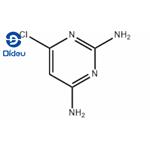
US $0.00-0.00/KG2025-11-19
- CAS:
- 156-83-2
- Min. Order:
- 1KG
- Purity:
- 98
- Supply Ability:
- 10000KGS

US $0.00-0.00/kg2025-04-21
- CAS:
- 156-83-2
- Min. Order:
- 1kg
- Purity:
- 99.99%
- Supply Ability:
- 20 tons
